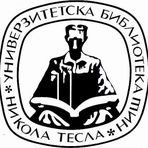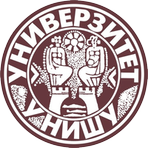Title
Kulturni i socijalni kapital porodice kao faktori obrazovnog postignuća dece: studija slučaja srednjoškolaca iz jugoistočne Srbije
Creator
Stanojević, Nenad, 1993-
CONOR:
18052455
Copyright date
2025
Object Links
Select license
Autorstvo-Nekomercijalno-Bez prerade 3.0 Srbija (CC BY-NC-ND 3.0)
License description
Dozvoljavate samo preuzimanje i distribuciju dela, ako/dok se pravilno naznačava ime autora, bez ikakvih promena dela i bez prava komercijalnog korišćenja dela. Ova licenca je najstroža CC licenca. Osnovni opis Licence: http://creativecommons.org/licenses/by-nc-nd/3.0/rs/deed.sr_LATN. Sadržaj ugovora u celini: http://creativecommons.org/licenses/by-nc-nd/3.0/rs/legalcode.sr-Latn
Language
Serbian
Cobiss-ID
Theses Type
Doktorska disertacija
description
Datum odbrane: 22.07.2025.
Other responsibilities
Academic Expertise
Društveno-humanističke nauke
University
Univerzitet u Nišu
Faculty
Filozofski fakultet
Group
Departman za sociologiju
Alternative title
Family's cultural and social capital as the factors of children's educational achievement: a case study of high school students from southeastern Serbia
Publisher
[N. M. Stanojević]
Format
235, 9-11 listova
description
Biografija autora: list 235.
Bibliografija: list. 220-230.
description
Sociology of education
Abstract (en)
Contrary to the dominant narrative about meritocracy, i.e. the
existence of equal chances for all citizens of a society, some
theoretical viewpoints in the scientific discourse point to numerous
factors that differently determine the possibilities of individuals and
influence their educational achievement. Family and the capital it
owns stand out as one of the most important factors. Therefore, this
doctoral dissertation attempts to understand how family's cultural and
social capital influence the educational achievements of high school
students in Southeastern Serbia. To understand this relationship, the
influence of cultural and social capital on the achieved results in high
school education was comparatively analyzed.
In the theoretical conceptualization of cultural capital, the central part
represents understandings of Pierre Bourdieu (1986, 1991, 2013
[1979]), which were supplemented and expanded mainly by authors
who follow his basic propositions: Paul DiMaggio (1982, 2007),
Fiona Devine (2004), etc. The cultural capital of families was
analyzed through four dimensions: embodied, objectified and
institutionalized cultural capital, as well as cultural participation.
On the other hand, the three most important theorists were used in the
theoretical conceptualization of social capital: Pierre Bourdieu, James
Coleman and Robert Putnam. In accordance with Coleman's
approach, which is the most suitable for the needs of this research,
two dimensions of this concept are analyzed. The first dimension is
social capital within the family; the second, social capital outside the
family.
The research itself was designed as a multi-case study. Two students
were selected from ten schools in Southeastern Serbia, one from the
best and one from the group of the weakest students of a particular
school. Therefore, the sample comprised twenty students and their
families (student and his/her family representing one case).
The main data collecting technique was a semi-structured interview -
with students, their parents/guardians and professional school staff or
class teachers. Additionally, an analysis of the documentation was
conducted, that is, the collection of data from grade books and other
available documentation about students.
The results show that the influence of family on students' educational
achievement is very pronounced. Family's cultural and social capital
largely determine student's educational outcomes. Regarding all
dimensions of cultural and social capital and most of their indicators,
differences can be observed between the two groups of students.
In the case of cultural capital, in cases with students with exceptional
educational achievement, a larger volume of institutionalized (higher
level of parents' education), embodied (developed speech patterns and
educational ethos) and objectified cultural capital (possession of a
large number of books, etc.) is observed, as well as cultural
participation (visiting the theater, participating in cultural production,
etc.).
With regard to social capital, in cases with students with exceptional
educational achievement, a greater volume of social capital is
observed within the family (closer relations between parents and
children, the existence of discussions about schooling, standard
families in structure, etc.) and social capital outside the family (better
connection between parents and the school, closure of social
networks, participation of students in extracurricular activities).
Students with a large amount of family’s social and cultural capital
had the best achievement, and those with a small amount of family’s
social and cultural capital had the lowest achievement. However, it
has been shown that in cases where the extent of these capitals differ,
the dimension of social capital within the family can have a decisive
effect on educational achievement.
Authors Key words
obrazovanje, nejednakosti, kulturni kapital, socijalni kapital, studija
slučaja, porodica, jugoistočna Srbija
Authors Key words
education, inequalities, cultural capital, social capital, case study,
family, southeast Serbia
Classification
316.356.2:371.26(497.11-12)(043.3)
Subject
S 210
Type
Tekst
Abstract (en)
Contrary to the dominant narrative about meritocracy, i.e. the
existence of equal chances for all citizens of a society, some
theoretical viewpoints in the scientific discourse point to numerous
factors that differently determine the possibilities of individuals and
influence their educational achievement. Family and the capital it
owns stand out as one of the most important factors. Therefore, this
doctoral dissertation attempts to understand how family's cultural and
social capital influence the educational achievements of high school
students in Southeastern Serbia. To understand this relationship, the
influence of cultural and social capital on the achieved results in high
school education was comparatively analyzed.
In the theoretical conceptualization of cultural capital, the central part
represents understandings of Pierre Bourdieu (1986, 1991, 2013
[1979]), which were supplemented and expanded mainly by authors
who follow his basic propositions: Paul DiMaggio (1982, 2007),
Fiona Devine (2004), etc. The cultural capital of families was
analyzed through four dimensions: embodied, objectified and
institutionalized cultural capital, as well as cultural participation.
On the other hand, the three most important theorists were used in the
theoretical conceptualization of social capital: Pierre Bourdieu, James
Coleman and Robert Putnam. In accordance with Coleman's
approach, which is the most suitable for the needs of this research,
two dimensions of this concept are analyzed. The first dimension is
social capital within the family; the second, social capital outside the
family.
The research itself was designed as a multi-case study. Two students
were selected from ten schools in Southeastern Serbia, one from the
best and one from the group of the weakest students of a particular
school. Therefore, the sample comprised twenty students and their
families (student and his/her family representing one case).
The main data collecting technique was a semi-structured interview -
with students, their parents/guardians and professional school staff or
class teachers. Additionally, an analysis of the documentation was
conducted, that is, the collection of data from grade books and other
available documentation about students.
The results show that the influence of family on students' educational
achievement is very pronounced. Family's cultural and social capital
largely determine student's educational outcomes. Regarding all
dimensions of cultural and social capital and most of their indicators,
differences can be observed between the two groups of students.
In the case of cultural capital, in cases with students with exceptional
educational achievement, a larger volume of institutionalized (higher
level of parents' education), embodied (developed speech patterns and
educational ethos) and objectified cultural capital (possession of a
large number of books, etc.) is observed, as well as cultural
participation (visiting the theater, participating in cultural production,
etc.).
With regard to social capital, in cases with students with exceptional
educational achievement, a greater volume of social capital is
observed within the family (closer relations between parents and
children, the existence of discussions about schooling, standard
families in structure, etc.) and social capital outside the family (better
connection between parents and the school, closure of social
networks, participation of students in extracurricular activities).
Students with a large amount of family’s social and cultural capital
had the best achievement, and those with a small amount of family’s
social and cultural capital had the lowest achievement. However, it
has been shown that in cases where the extent of these capitals differ,
the dimension of social capital within the family can have a decisive
effect on educational achievement.
“Data exchange” service offers individual users metadata transfer in several different formats. Citation formats are offered for transfers in texts as for the transfer into internet pages. Citation formats include permanent links that guarantee access to cited sources. For use are commonly structured metadata schemes : Dublin Core xml and ETUB-MS xml, local adaptation of international ETD-MS scheme intended for use in academic documents.


